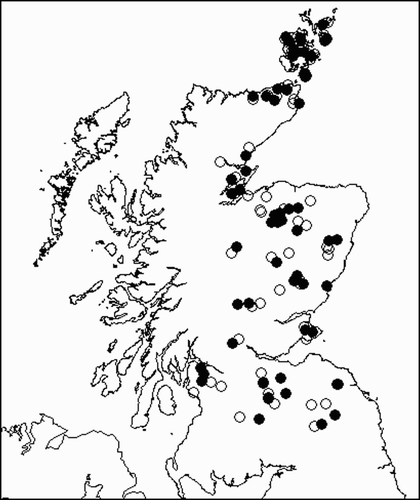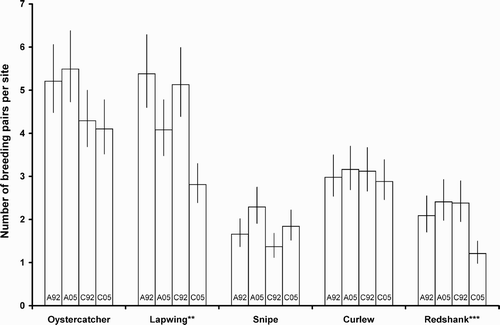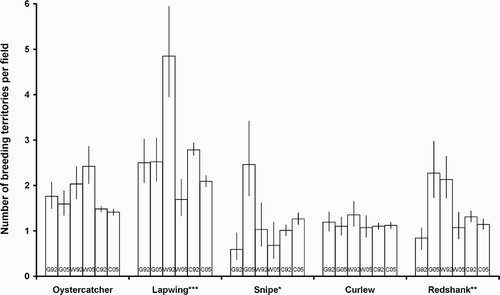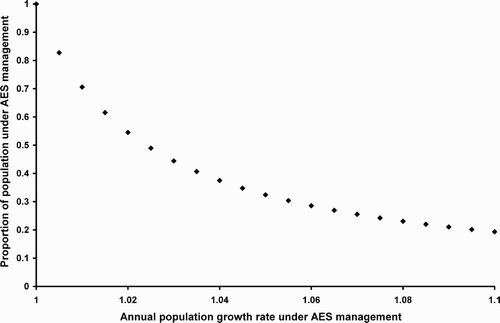Figures & data
Table 1. Agri-environment management options for farmland waders.
Figure 1. The distribution of sites surveyed for breeding waders in Scotland in 1992 and 2005. Filled squares indicate sites with agri-environment management agreements for breeding waders under one or more options listed in ; open squares indicate sites not under agri-environment management.

Figure 2. Modelled estimates (± se) of numbers of breeding pairs of each wader species on sites with (A) and without (C) agri-environment scheme (AES) management. Numbers refer to years: 1992 (92) and 2005 (05); species for which the change in numbers between 1992 and 2005 differed significantly between AES and Control sites are indicated by asterisks (**P < 0.01; ***P < 0.001).

Table 2. The number of fields in each of the main agri-environment scheme (AES) management categories (grassland and wetland), together with the number within which a breeding territory of each wader species was recorded in at least one of the survey years.
Figure 3. Modelled estimates (± se) of numbers of breeding pairs of each wader species on individual fields under ‘grassland’ agri-environment scheme (AES) management (G), ‘wetland’ AES management (W), and not under AES management (C) in 1992 (92) and 2005 (05). Species for which the change in numbers between 1992 and 2005 differs significantly between ‘grassland’, ‘wetland’ and control fields are indicated by asterisks (*P < 0.05; ** P < 0.01; *** P < 0.001).

Figure 4. Relationship between annual population growth under agri-environment scheme management and the proportion of the overall population that must benefit from this management in order to achieve overall population stability. Example plotted is for Lapwings with an assumed constant rate of decline of 2.4% per annum, amounting to 27% over 13 years.
